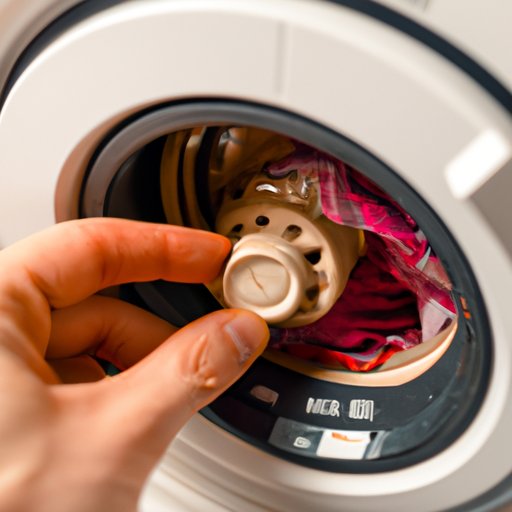Introduction
An unbalanced washer is a common problem that can cause a number of issues, including excessive noise, vibration, and wear and tear on your machine. If left unchecked, it can also cause costly damage to your floors and walls. Fortunately, there are several steps you can take to diagnose and fix an unbalanced washer.

Definition of an Unbalanced Washer
An unbalanced washer is when the washing machine is not properly balanced between the drum and the base. This can cause the machine to shake, rattle, and vibrate during the spin cycle. It can also lead to excess wear and tear on the bearings, seals, and other components.
Overview of the Problem
If your washer is unbalanced, it is important to resolve the issue as soon as possible. Doing so can help prevent further damage to your machine and your home. Symptoms of an unbalanced washer include excessive noise, vibration, and movement of the machine during the spin cycle. It may also cause damage to your flooring or walls.
Step-by-Step Guide to Fixing An Unbalanced Washer
Fixing an unbalanced washer requires a few simple steps. Follow these instructions to get your machine back in working order.
Identifying the Problem
The first step in fixing an unbalanced washer is to identify the problem. Check the machine for signs of excessive vibration or noise. You may also notice that the machine is shaking more than usual during the spin cycle. If you notice any of these symptoms, it is likely that your washer is unbalanced.
Troubleshooting Tips
If you think your washer is unbalanced, there are a few troubleshooting tips you can try. First, check to make sure the load size is appropriate for the size of the drum. Also, make sure the washer is leveled correctly. Finally, check for any loose connections or worn parts that could be causing the imbalance.
Common Causes of Unbalance
There are several common causes of an unbalanced washer. These include a large load size, an uneven surface, and worn or loose parts. It is important to identify the cause of the issue before attempting to fix it.
Adjusting the Load Size
If the load size is too large, it can cause the washer to become unbalanced. To fix this, reduce the amount of items in the load and redistribute them evenly around the drum. This will help to ensure that the load is balanced and will help to prevent further issues.
DIY Solutions for Unstable Washing Machines
In addition to adjusting the load size, there are several DIY solutions you can try to fix an unbalanced washer. Here are some of the most effective methods:
Checking the Drum
The drum of the washer is one of the most important components. Make sure the drum is securely attached to the machine and that all of the parts are in good working order. If any of the parts are worn, damaged, or loose, it can cause the machine to become unbalanced.
Leveling the Machine
Another important step is to make sure the washer is level. Use a spirit level to check the machine and adjust the legs accordingly. This will help to ensure that the machine is balanced and will help to prevent further issues.
Tightening Loose Connections
Loose connections can cause the washer to become unbalanced. Inspect the connections and tighten any loose screws or bolts. This will help to ensure that the machine is secure and will help to prevent further issues.
Replacing Worn Parts
Finally, if any of the parts of the washer are worn, they should be replaced. This includes the suspension rods, shock absorbers, and other components. Replacing worn parts will help to ensure that the machine is balanced and will help to prevent further issues.
Conclusion
An unbalanced washer can be a nuisance and can cause a variety of problems. Fortunately, there are several steps you can take to diagnose and fix the issue. By following the steps outlined above, you can quickly get your washer back in working order. Additionally, regular maintenance and inspection of your washer will help to prevent future unbalancing issues.
For further assistance, contact a professional appliance repair technician. They will be able to inspect your washer and provide advice on how to best fix the issue.


